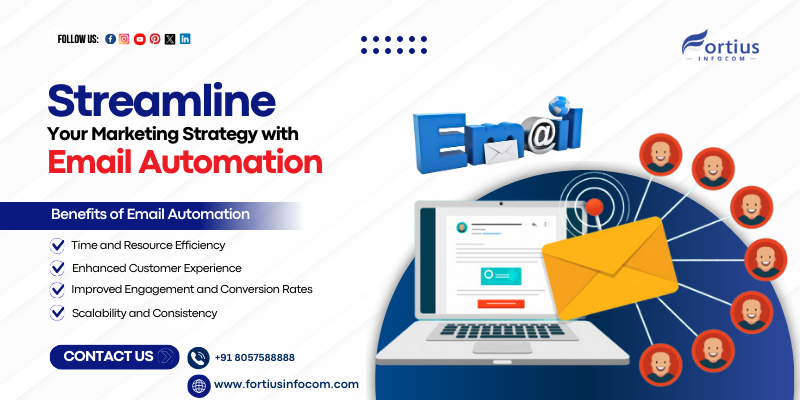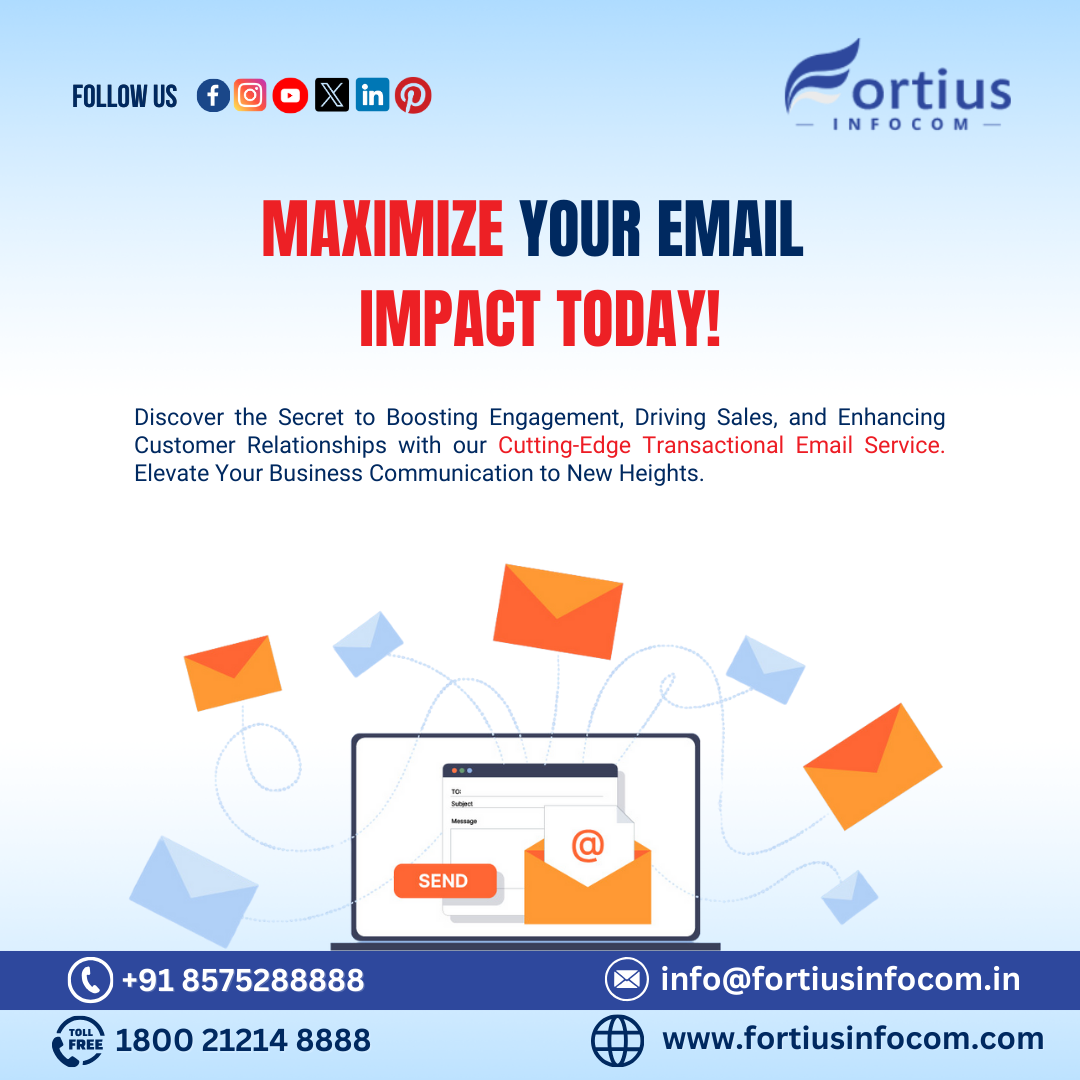
Transactional Email Services | The world is moving fast, in terms of technology, competition, and transformation. Businesses too, need to be swift enough to catch up or they might get left behind. Here we are talking about innovating strategies to continuously attract and retain customers. One of the most compelling strategies for enhancing marketing efforts to attract and retain customers is Email Automation.
This method not only saves time and resources but also proves effective in increasing subscriber engagement. By creating targeted campaigns based on customer behavior, interests, and purchase history, email automation helps grow your brand through personalized communication that resonates with your audience. Transactional Email Services, often overlooked, plays a significant role in Email Automation.
Transactional Emails are automated messages, such as order confirmations, shipping updates, and account creation notifications, which can significantly impact customer loyalty and revenue growth.
Why Email Marketing?
Email marketing is a critical channel for businesses. Despite the rise of social media and other digital platforms, it has somehow managed to hold importance with its reliable and professional image. It has been one of the most effective ways used by businesses to reach the customers all through. It offers numerous benefits, including building customer relationships, increasing loyalty, and generating leads.
Transactional emails are essential in the email marketing strategy, as they are triggered by specific customer actions, like order confirmations or password resets. These emails have higher open rates than the promotional emails because they provide valuable information that recipients expect or need as they complete the task. By strategically using transactional emails, you can enhance customer engagement while promoting your brand and products.
Email Automation of Email Marketing:
Email automation refers to the use of technology and software to streamline the process of sending emails. With this, businesses can create and send personalized emails to their customers or target audience at specific times without any manual intervention. This technology is crucial for scaling email marketing efforts while being cost-effective. The employees on the project can actually free up their time for other productive tasks and leave this up for automation to do.
One of the most important advantages of transactional emails is that it helps businesses grow their brand with transactional emails. These emails respond to customer actions like purchases or account sign-ups and have higher open rates than other marketing messages. Leveraging these emails to the best through automated campaigns can drastically help in increasing audience engagement and building brand loyalty.
Benefits of Email Automation:
Email Automation is essential for businesses aiming to grow their brand and increase customer engagement. By automating transactional emails, companies can save time and resources while delivering targeted messages that drive sales and build trust. Let’s have a look at some of the numerous benefits it has to offer.
1. Time and Resource Efficiency:
Email automation streamlines the marketing process, allowing businesses to focus on other critical areas. Automated emails are sent by acting upon triggers of the audience. Since they are sent without manual intervention, it saves time and reduces the workload for marketing teams. This efficiency enables businesses to maintain consistent communication with their customers while freeing up resources for other important tasks.
2. Enhanced Customer Experience:
Automated emails provide timely and relevant information to customers, enhancing their overall experience. Transactional emails, such as order confirmations and shipping notifications, keep customers informed about their purchases, increasing their satisfaction and trust in your brand. By delivering personalized content, email automation helps businesses build stronger relationships with their customers.
3. Improved Engagement and Conversion Rates:
Email automation allows you to send personalized and targeted emails to yoru audience that have higher open and click-through rates as compared to generic business messages. By tailoring content to individual preferences and behaviors, businesses can engage their audience more effectively, leading to higher conversion rates. Automated emails, such as abandoned cart reminders or personalized product recommendations, encourage customers to take action, driving sales and revenue.
4. Scalability and Consistency:
Email automation allows businesses to scale their marketing efforts without making any compromise in its quality or consistency. Automated campaigns can reach a large audience simultaneously, ensuring that each customer receives the same level of attention and personalized content. This scalability is particularly beneficial for growing businesses that need to expand their reach while maintaining a high level of customer engagement.
Implementation of Email Automation:
Implementing email automation is crucial for the successful marketing strategy of any brand. The businesses must be quick to reach their customers for any query or confirmation they would need without any delay and with personalization. Email automation can do this and a lot more for your business. Since transactional emails are an essential part of your email strategy and are triggered by customer actions, you can utilize this significantly to grow your brand. To do this, here are the steps:
Identify Key Triggers:
The first step in implementing email automation into your campaign is identifying all the key triggers that will initiate the action of automated emails. These triggers can include customer actions such as making a purchase, signing up for an account, or abandoning a shopping cart. By understanding these triggers, businesses can create targeted and relevant email campaigns that resonate with their audience.
Create Compelling Email Templates:
Once the triggers are identified, businesses need to create compelling email templates that align with their brand’s voice and messaging style. These templates should be visually appealing, concise, and include a clear call-to-action. Personalization elements, such as addressing the recipient by name or including relevant product recommendations, can enhance the effectiveness of the emails.
Set Up Automated Workflows:
After creating the email templates, businesses need to set up automated workflows to send the emails when specific triggers occur. This involves using email automation software or platforms that allow businesses to schedule and send emails automatically. By setting up these workflows, businesses can ensure that their emails are delivered at the right time, increasing the chances of engagement and conversion. This approach not only enhances the customer experience but also promotes your brand effectively.
Tips for Successful Email Automation:
Email automation has the power to significantly grow your brand. To ensure that you run successful email automation campaigns, follow these tips:
Relevance and Engagement:
Use segmentation method to target specific consumer groups with personalized messaging.
Clear Call-to-Action (CTA):
Include a clear CTA in every email, guiding customers towards taking action like completing a purchase or clicking to learn more about products.
Visual Appeal and Mobile-Friendliness:
Ensure your emails are visually appealing and optimized for mobile devices, as more people access emails on mobile than ever before.
In order to successfully implement these tips, you will need to perform two important tasks:
1. Segment Your Audience:
Segmenting your audience is important for delivering personalized and relevant content to the customers. By dividing your email list into different segments based on factors such as demographics, purchase history, or engagement levels, businesses can tailor their messages to specific groups. This segmentation allows for more targeted and effective email campaigns, increasing the chances of engagement and conversion.
2. Test and Optimize:
Regularly testing and optimizing your email automation campaigns is essential for improving their performance. A/B testing different subject lines, email content, and CTAs can help identify what resonates best with your audience. Analyzing key metrics, such as open rates, click-through rates, and conversion rates, provides valuable insights into the effectiveness of your campaigns and allows for continuous improvement.
Examples of Effective Email Automation:
Email automation is something everyone has lately been using for their business. It allows you to engage with your customers effectively without actually putting in much human effort. Businesses have been able to leverage its benefits to a great extent. Here are some effective examples of email automation:
Abandoned Cart Emails:
These are triggered when customers abandon their shopping cart. They remind customers of their unfinished purchase. You can also include incentives like discounts or free shipping in these emails to encourage them to complete their order.
Post-purchase follow-up Emails:
Sent after a purchase, these emails thank customers for their business and request feedback. This improves customer satisfaction and loyalty.
Welcome Emails:
These emails are utilized to greet new customers or subscribers and set a further tone of communication with them. These emails may include a warm welcome message, an overview of products or services, and a special offer or discount to encourage the first purchase. Welcome emails have high open rates and are an excellent opportunity to make a positive first impression.
Re-Engagement Emails:
Designed to win back inactive or disengaged customers, these emails often include personalized offers, reminders, or feedback about a brand or service to restart engagement. This reinforces them to think again, and with the right content, it may convince them to take action too.
Email Marketing has evolved significantly from generic newsletters and spam folders to highly personalized, automated messages. Transactional emails, such as order confirmations and shipping notifications, are already effective in terms of open rates and click-throughs. Adding personalized content or upsell opportunities can turn these messages into valuable touchpoints, driving revenue and enhancing the customer experience. With the continuous evolution of email platforms, featuring dynamic content and automation workflows, the possibilities for creative and effective email marketing are expanding and flourishing wonderfully across industries.
By embracing email automation and leveraging Transactional Email Services, businesses can streamline their marketing strategies, increase engagement, and drive growth.
For more information on Transactional Email Services, visit Fortius Infocom.

Utilize transactional emails to boost business growth, engage customers, and enhance branding. Reach new heights!.